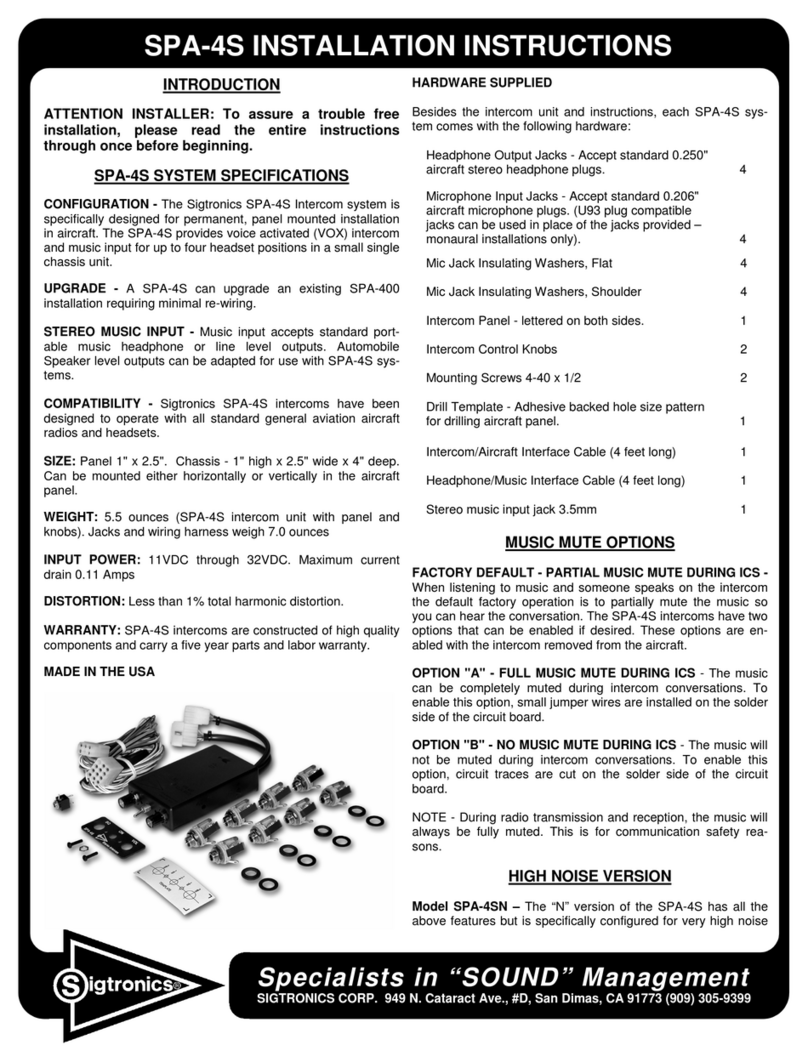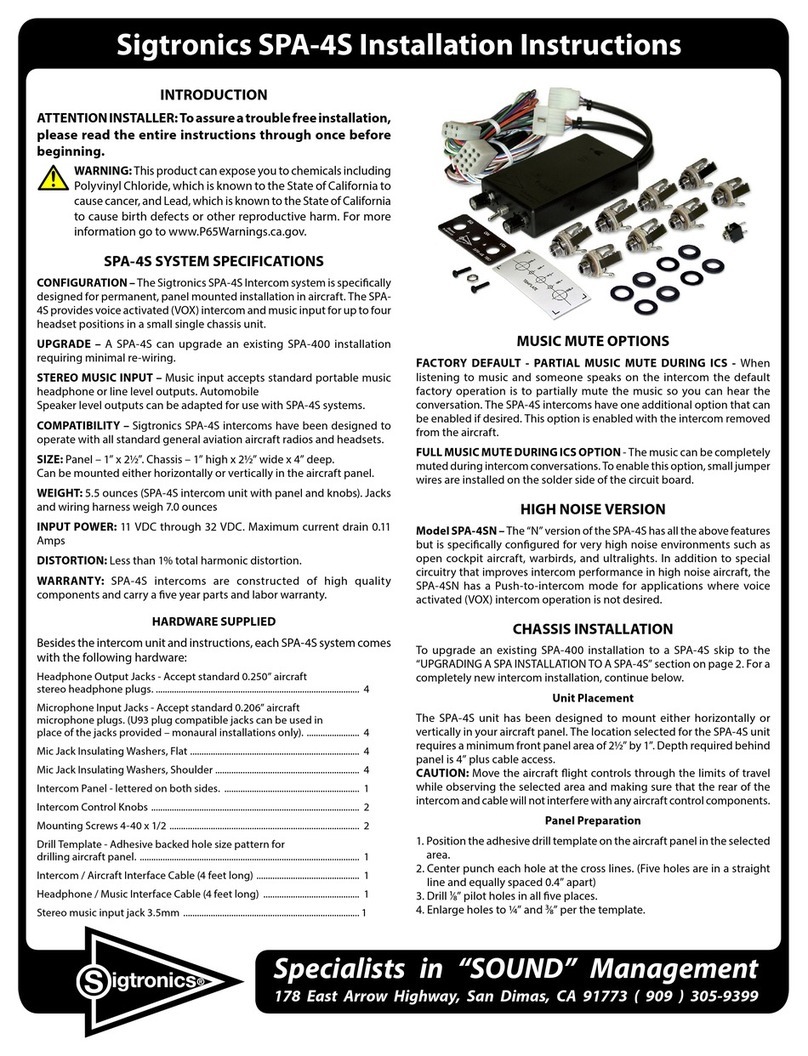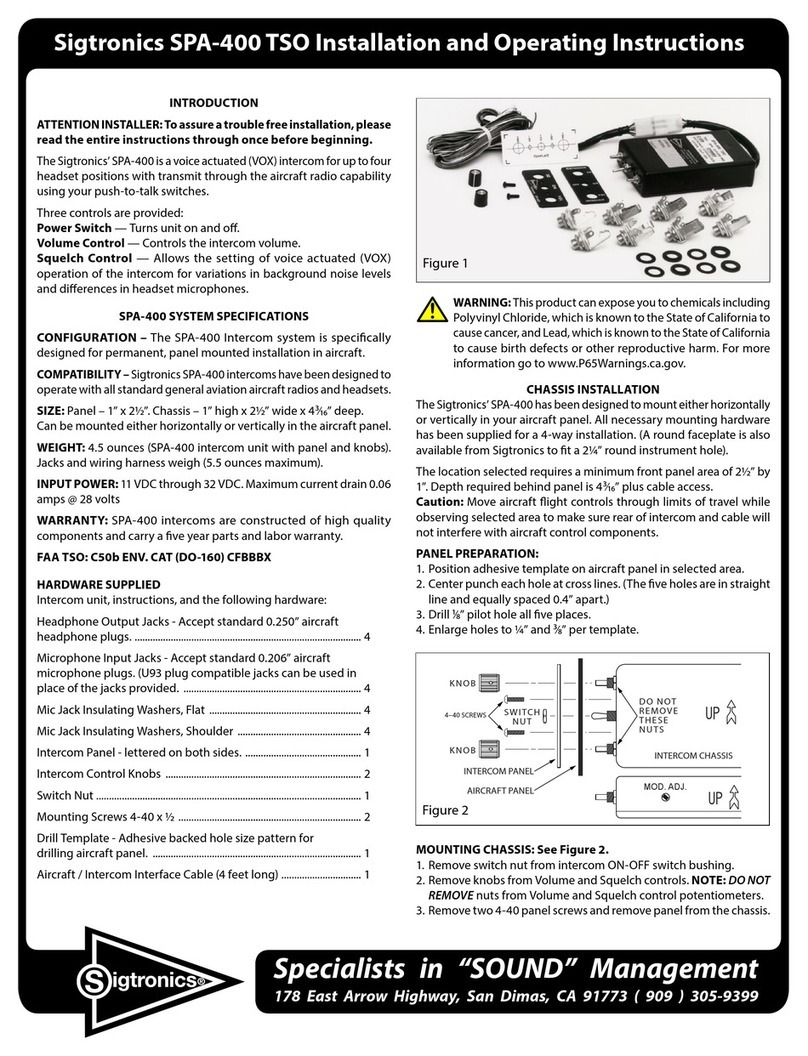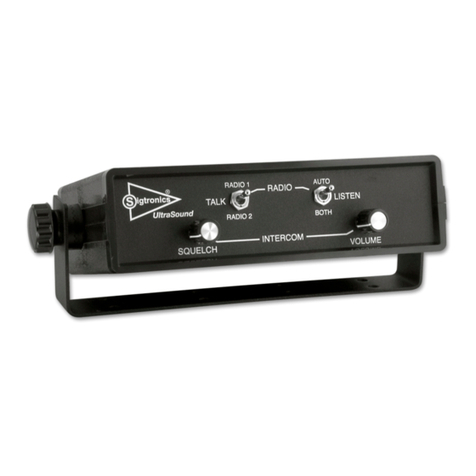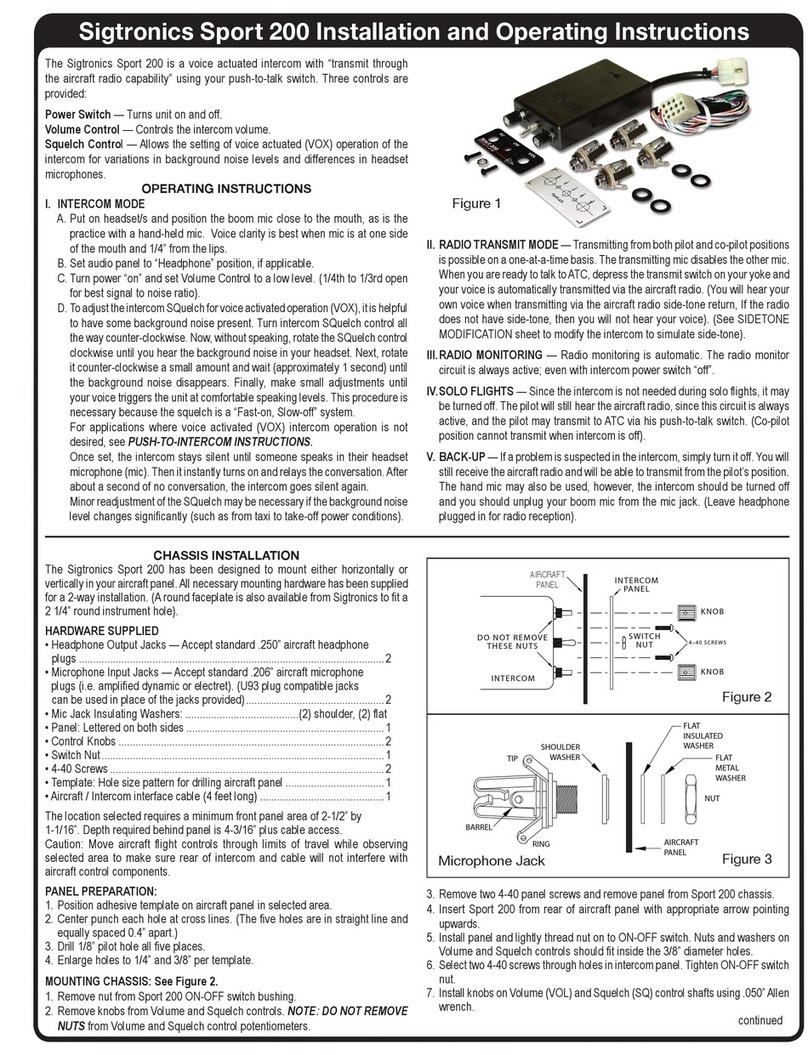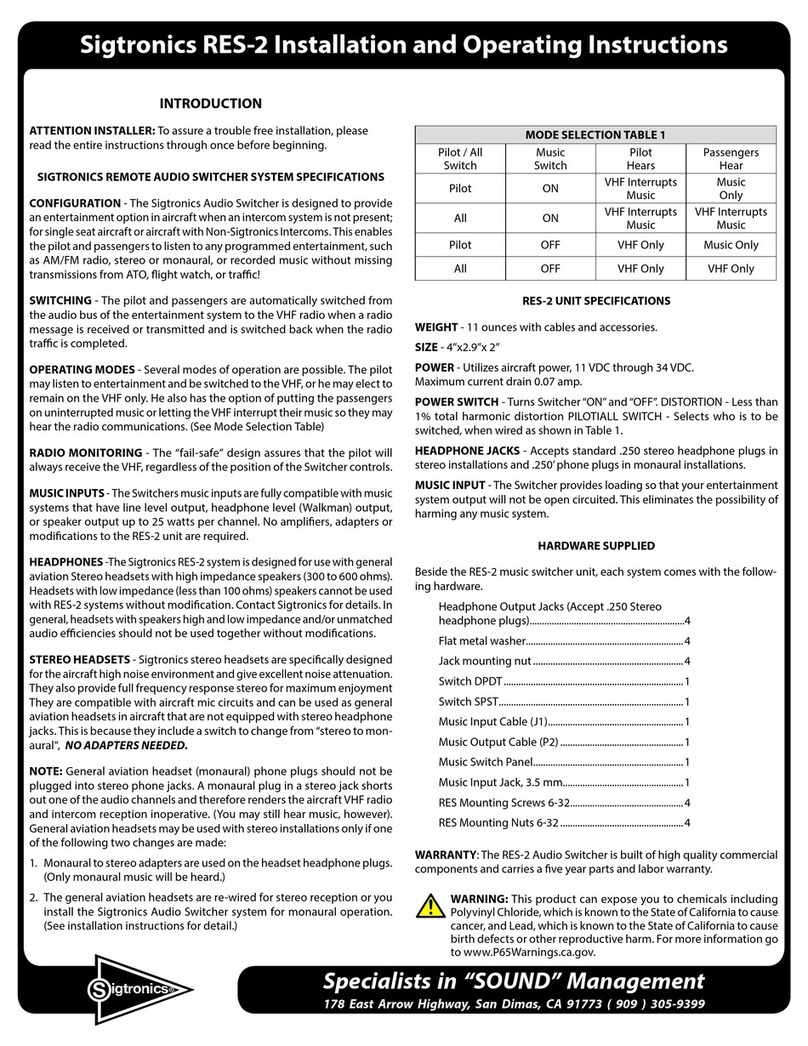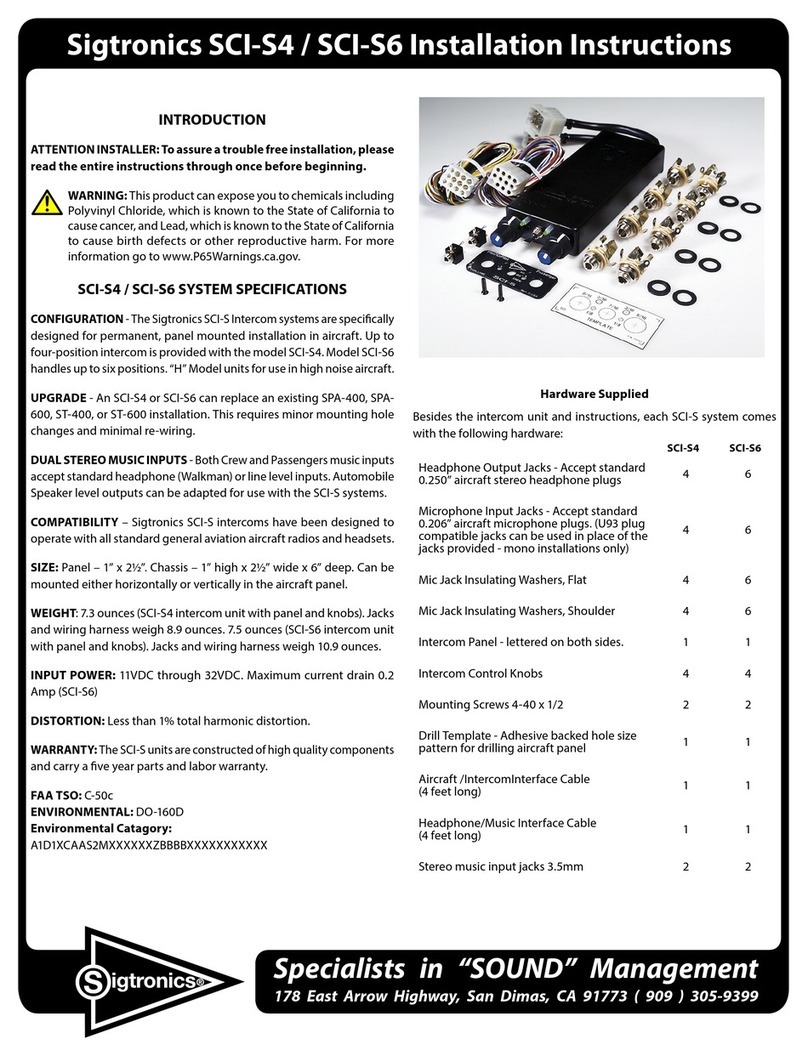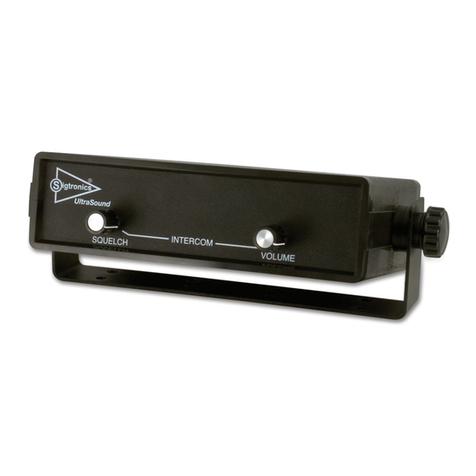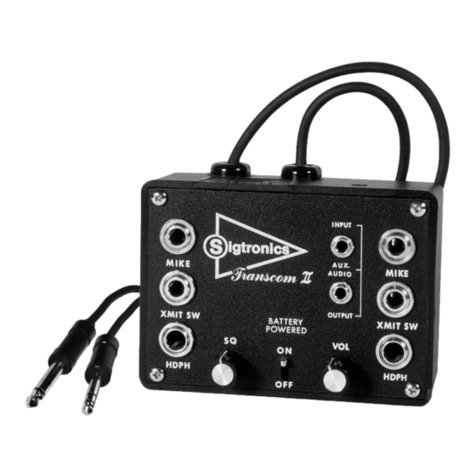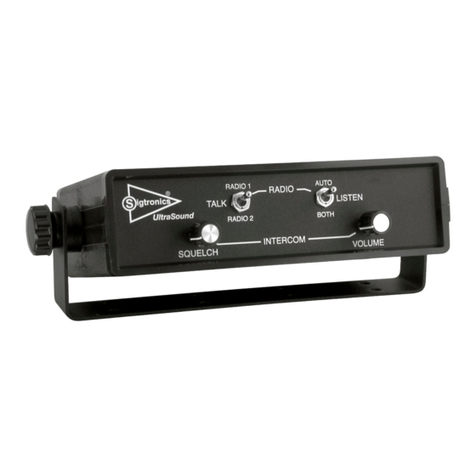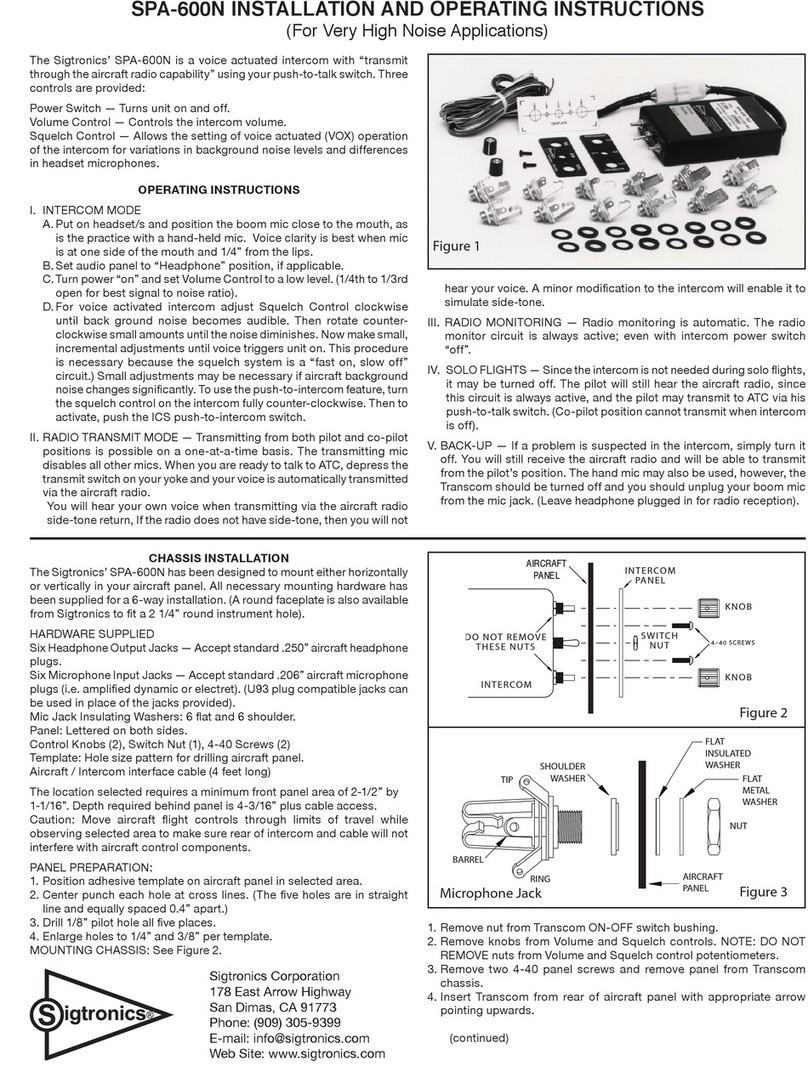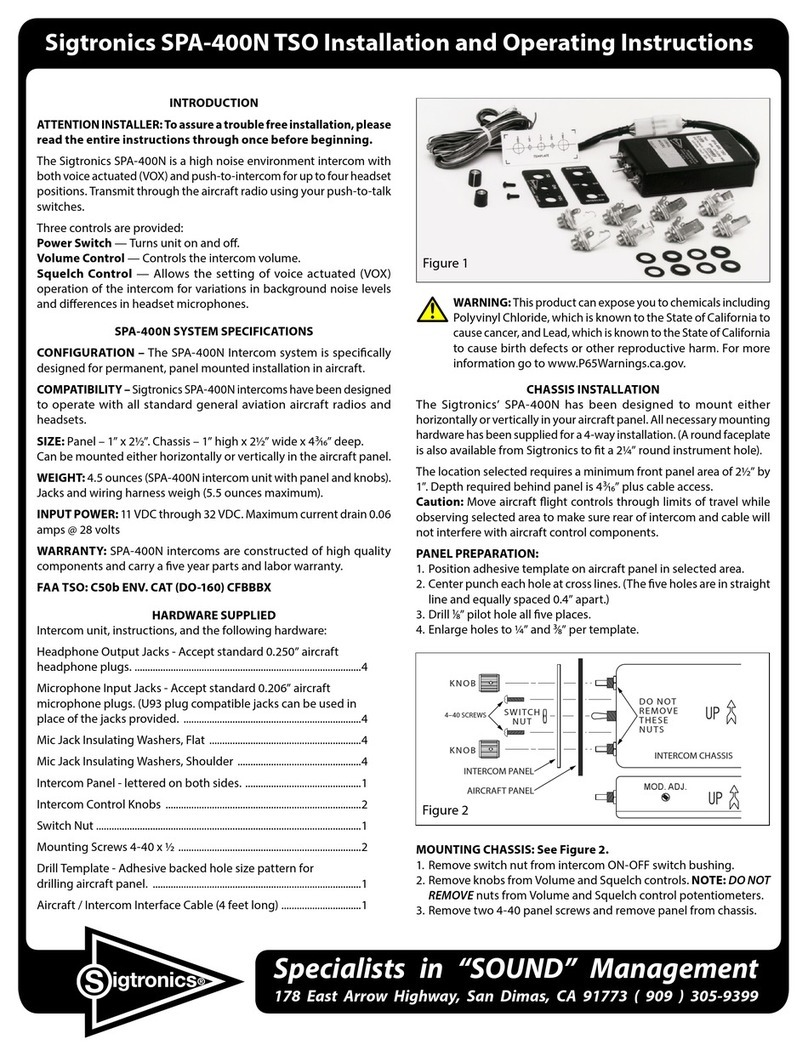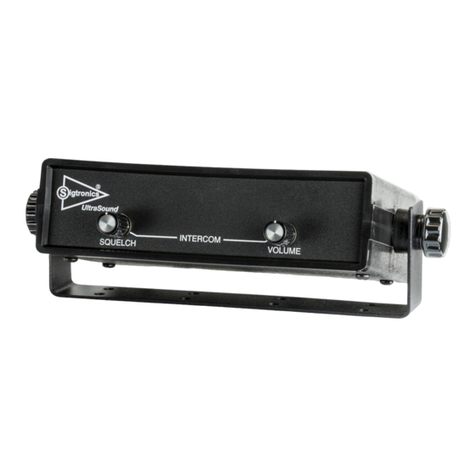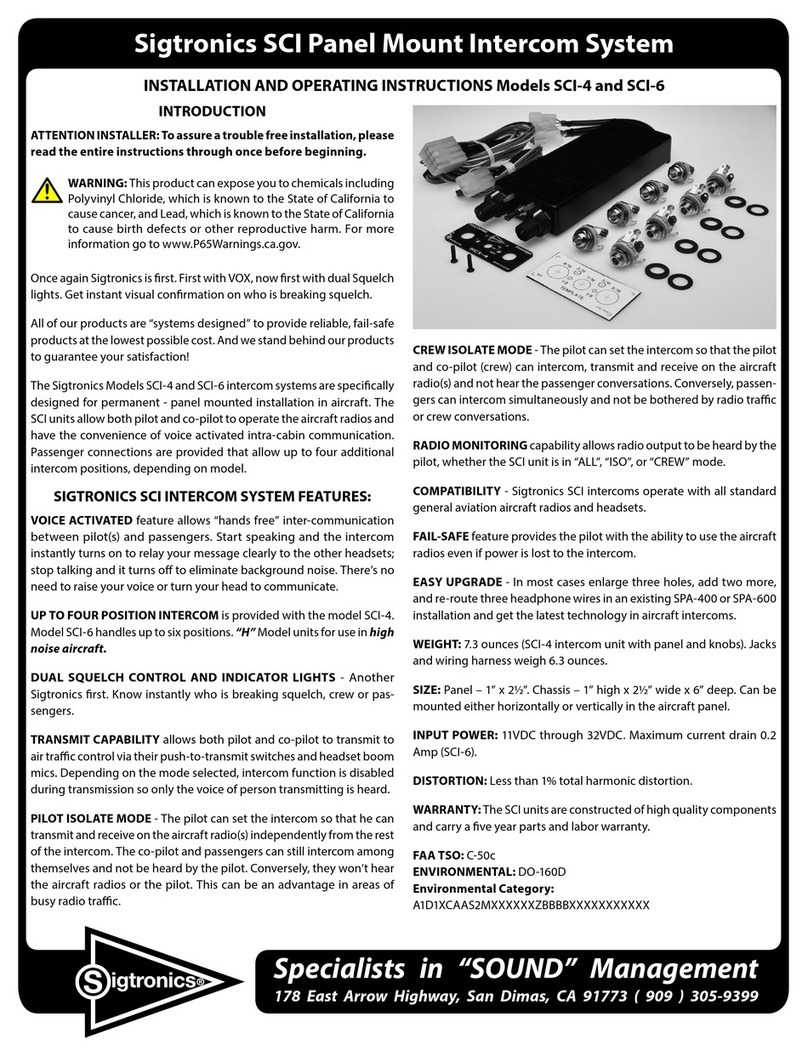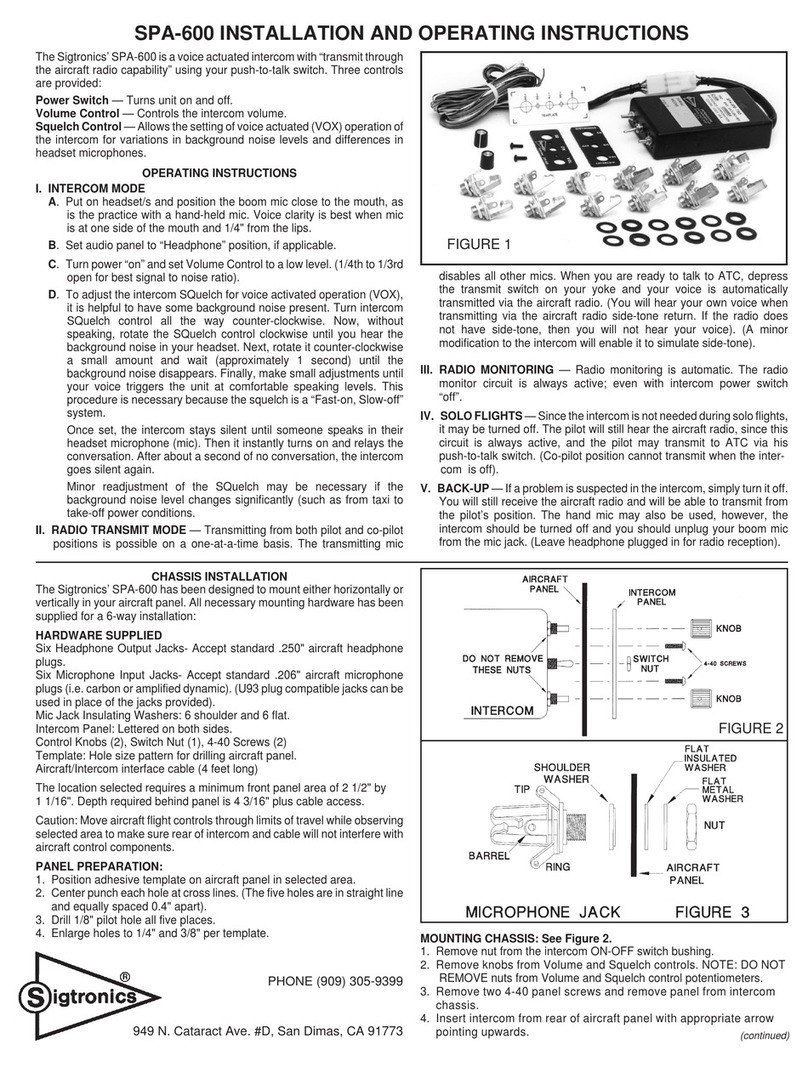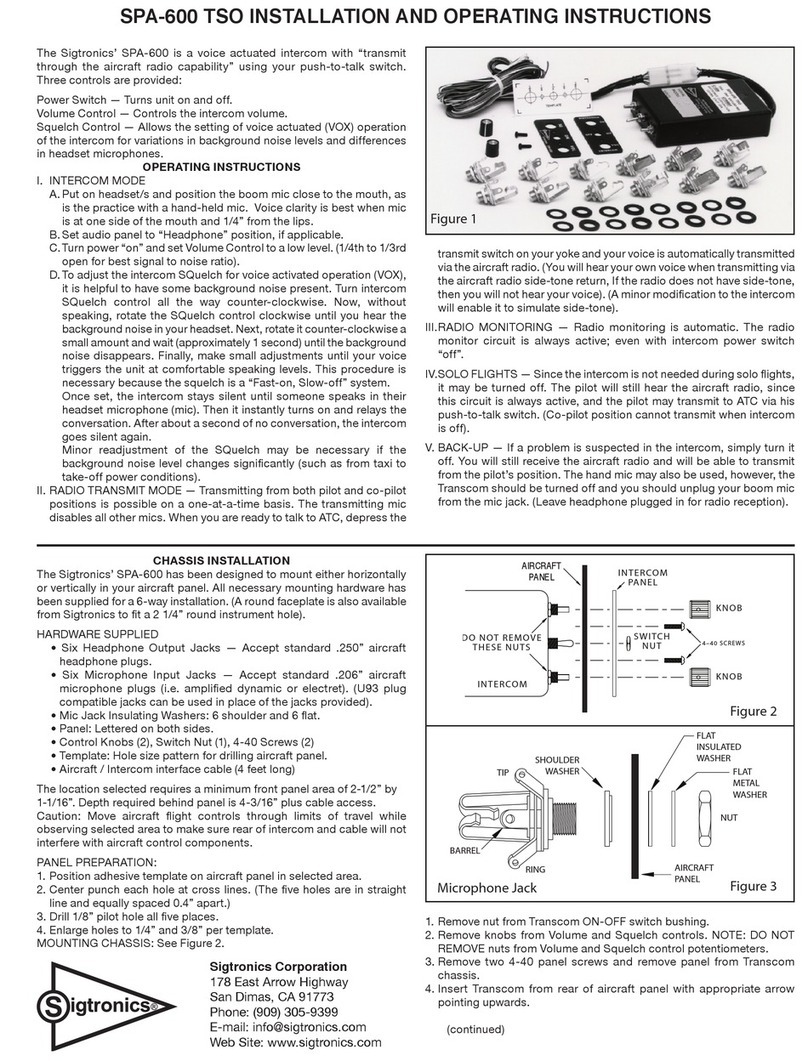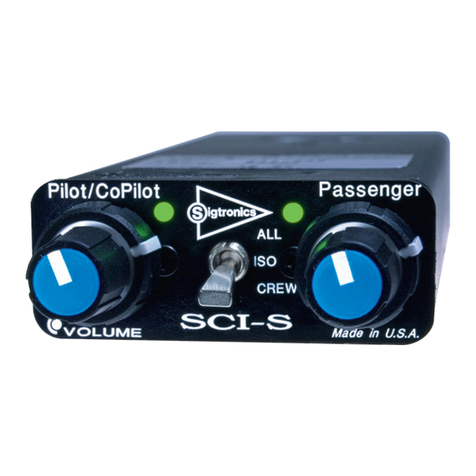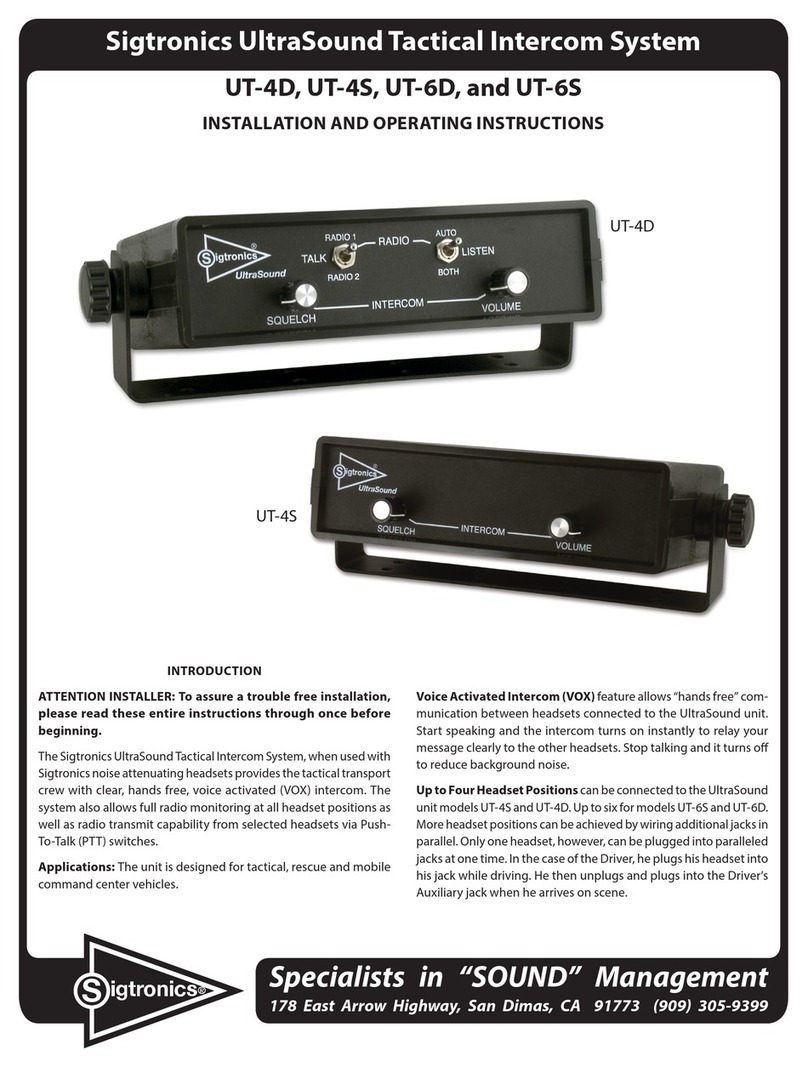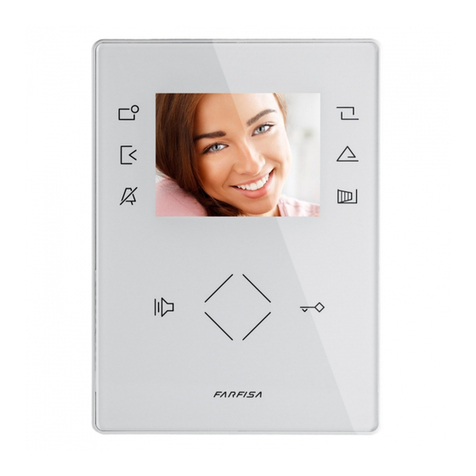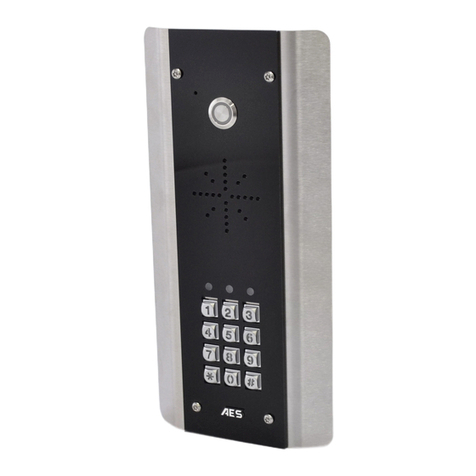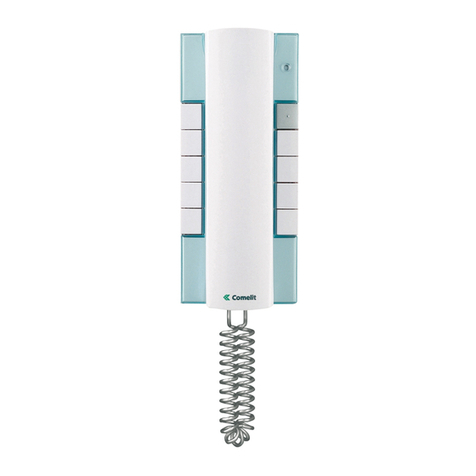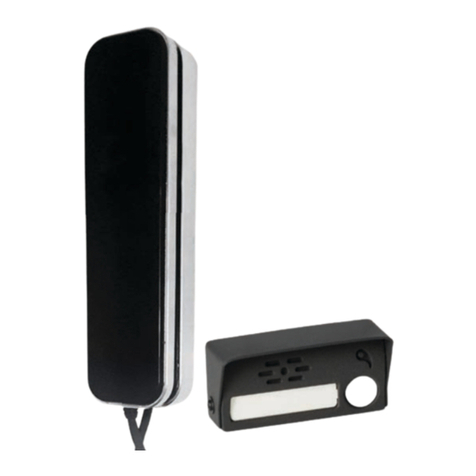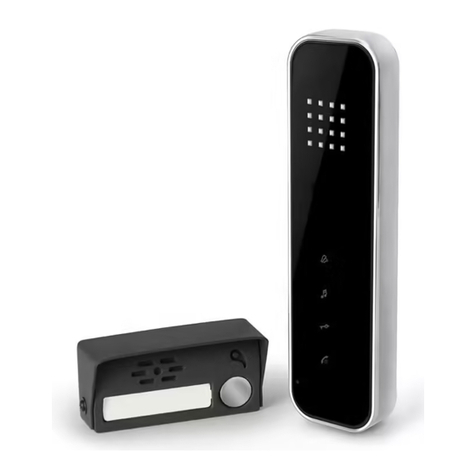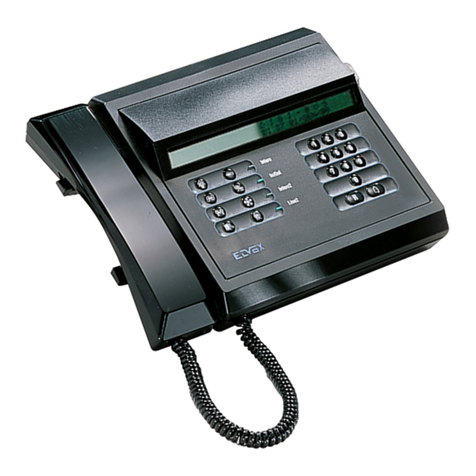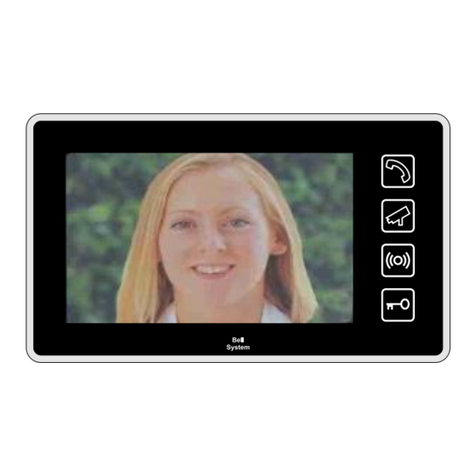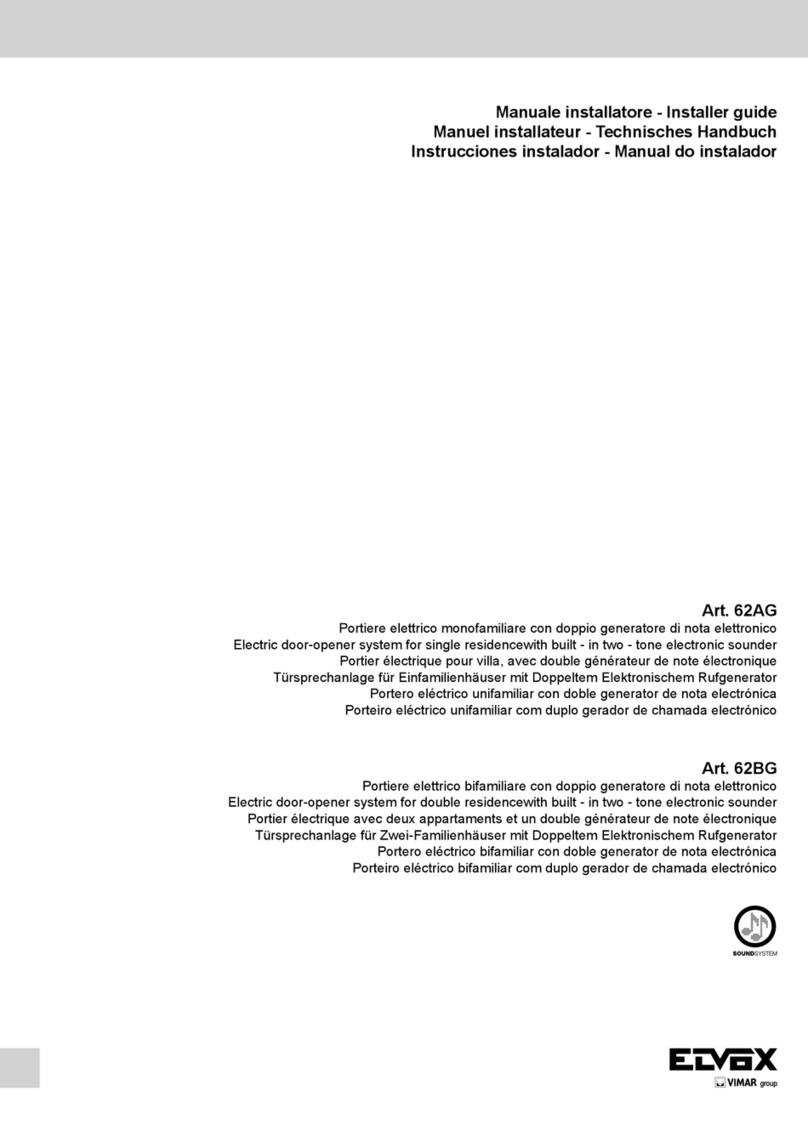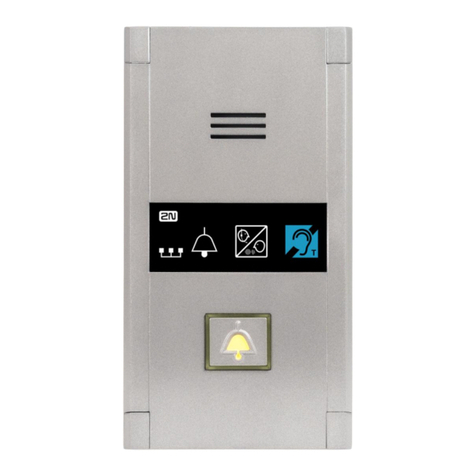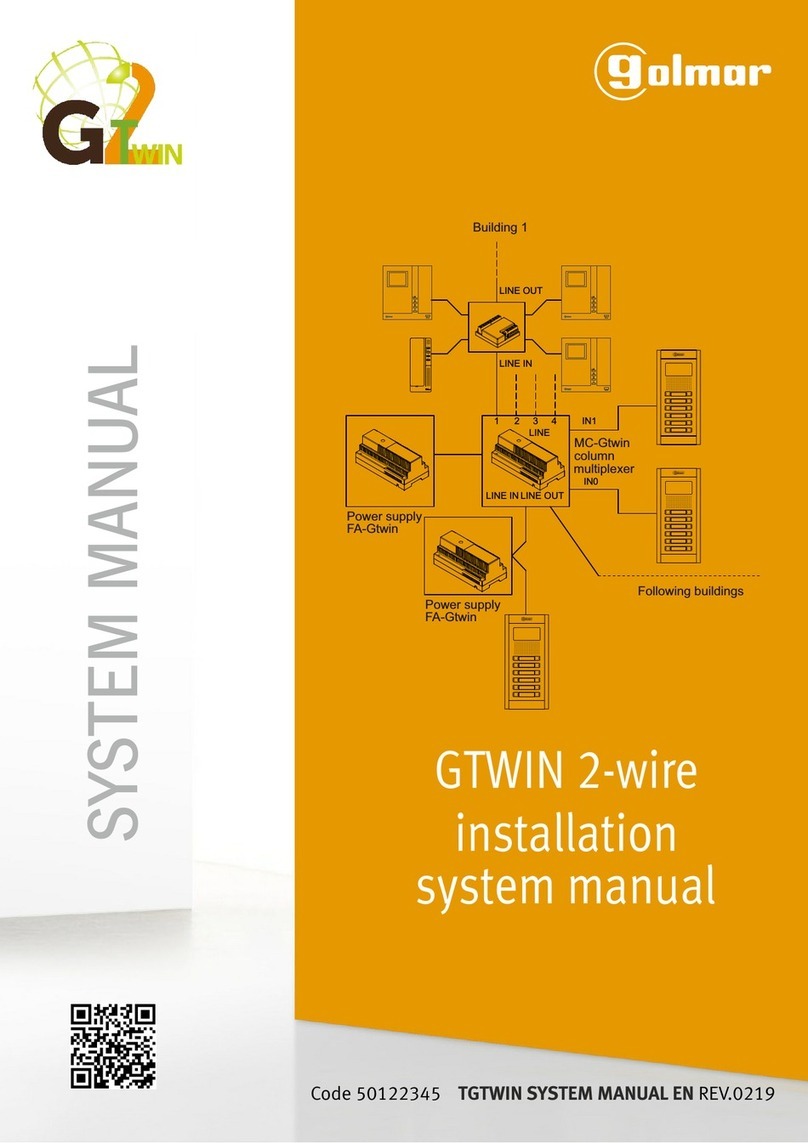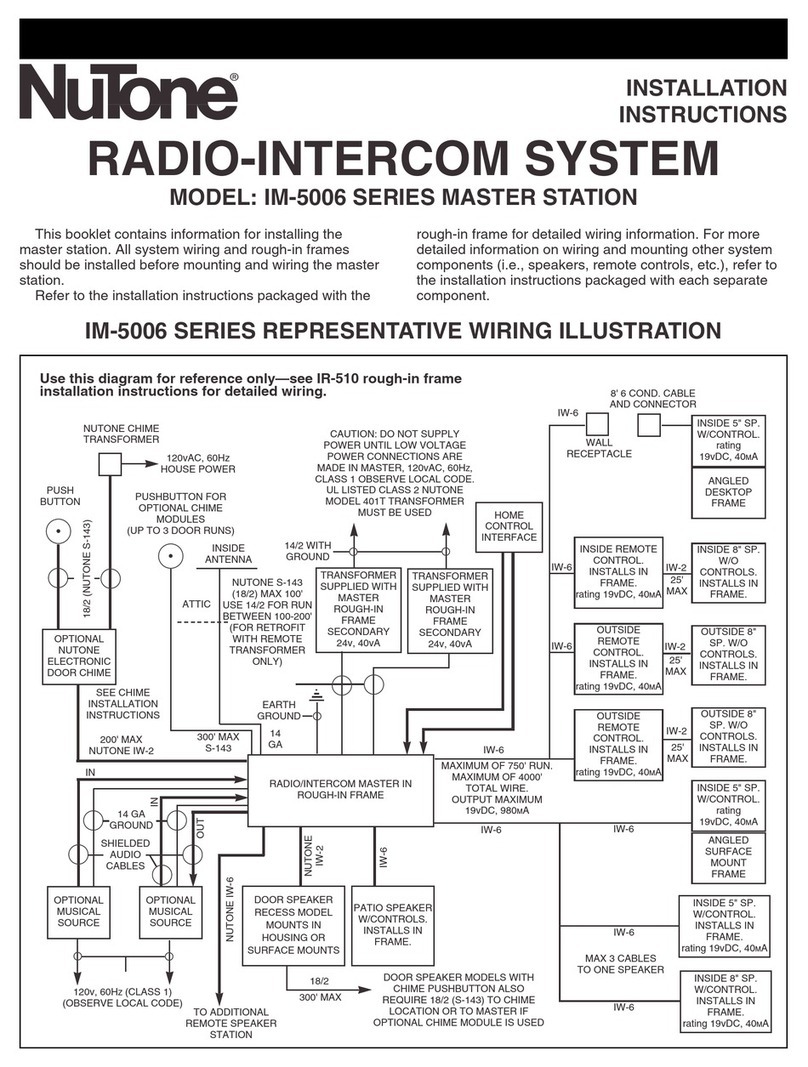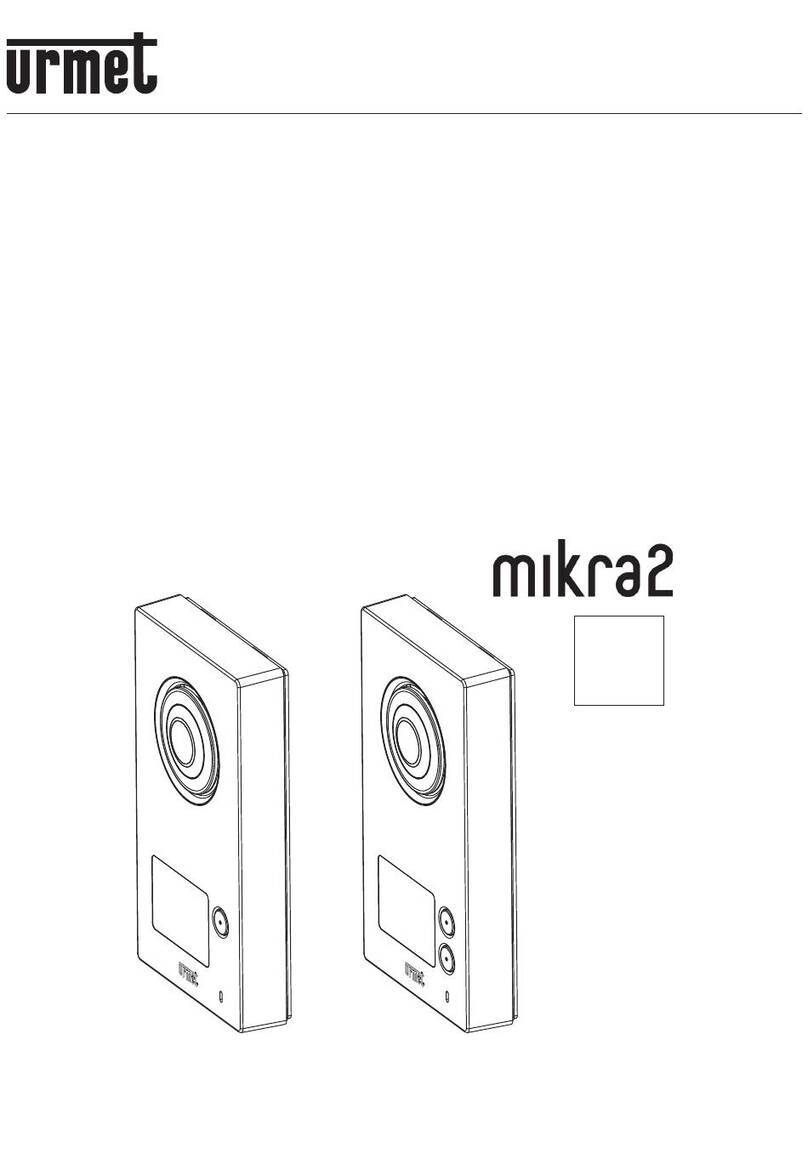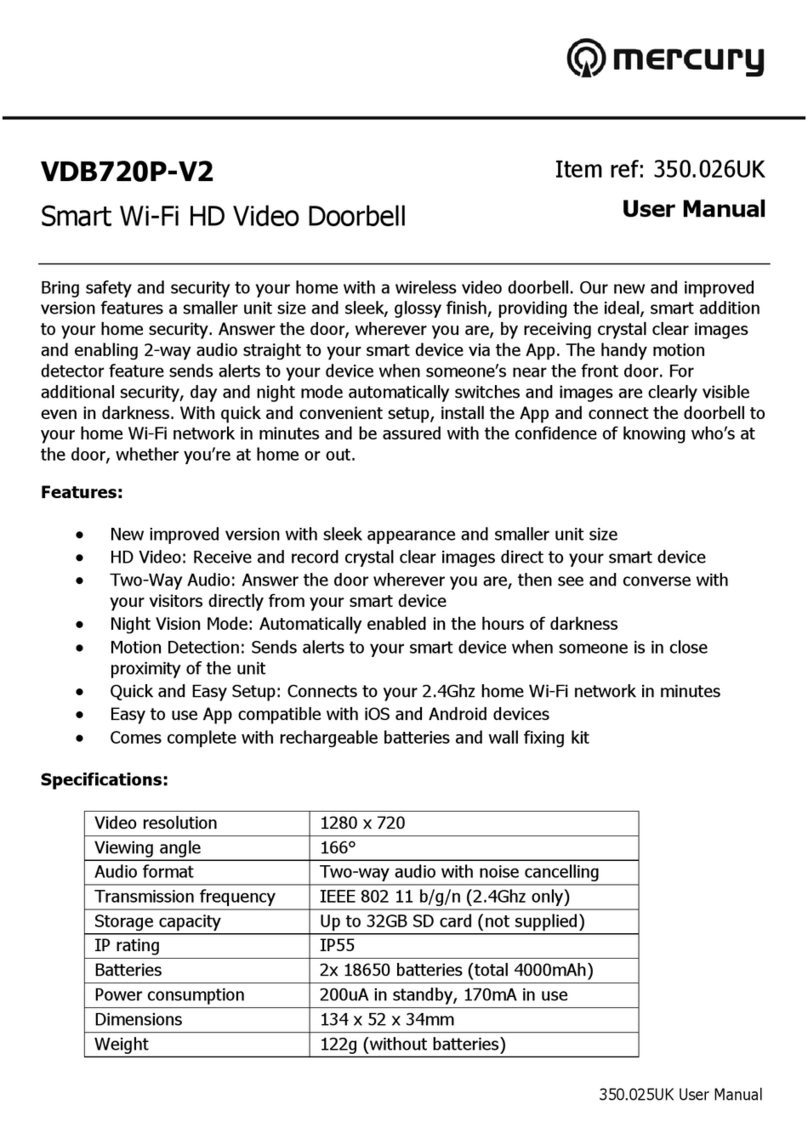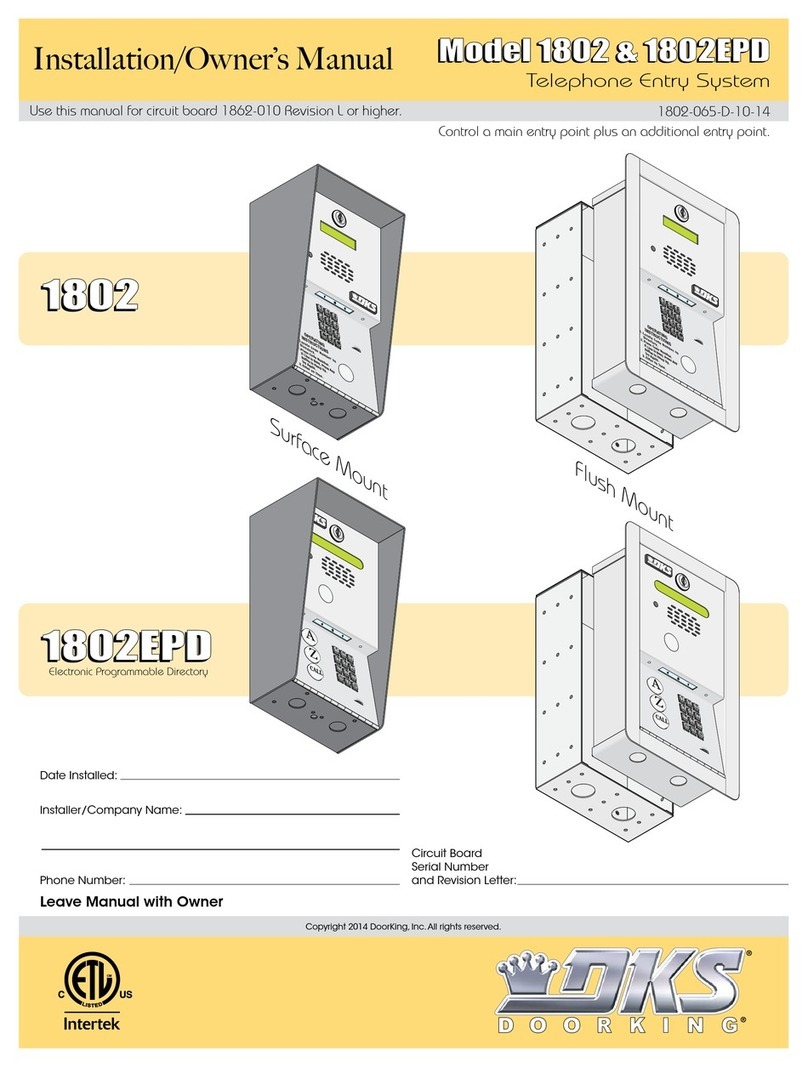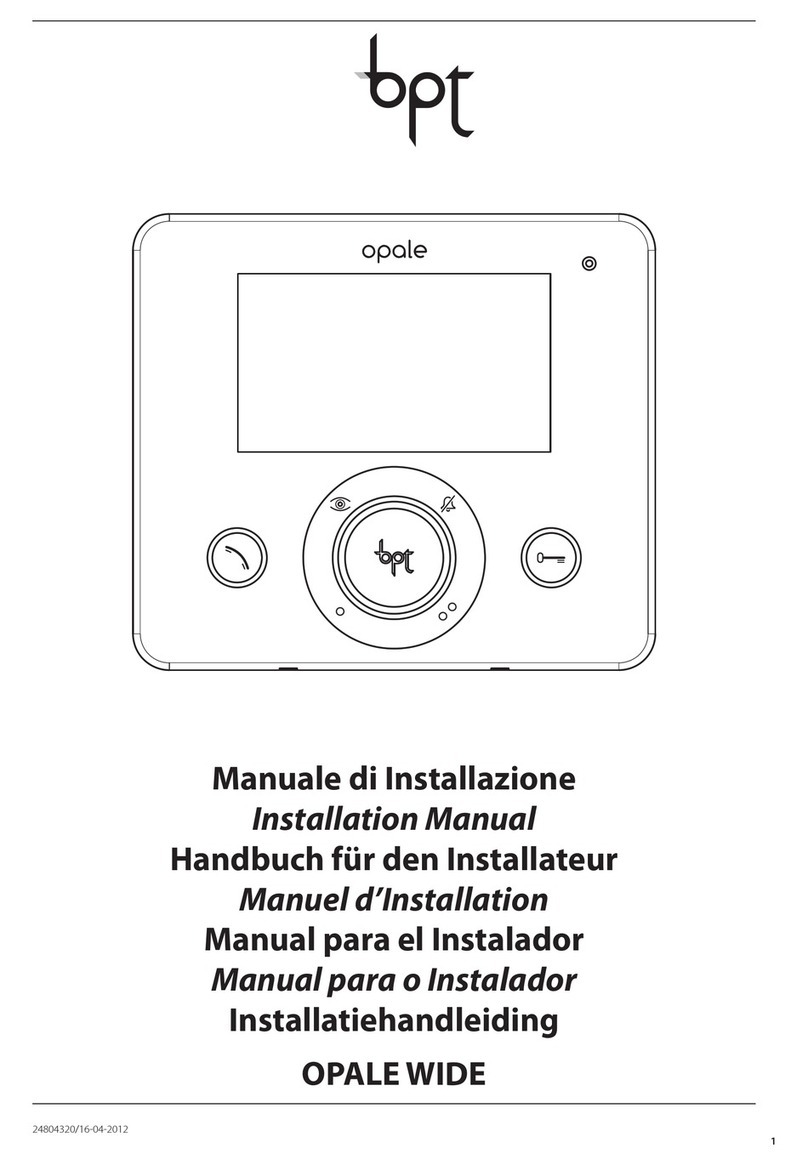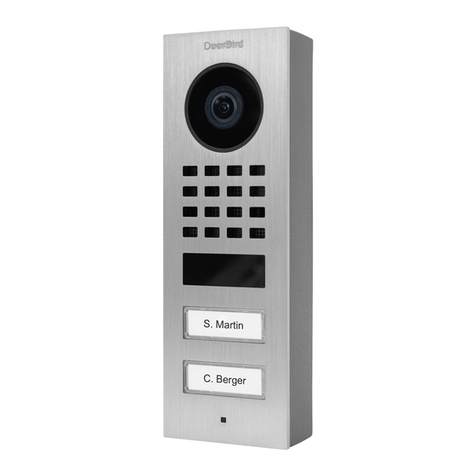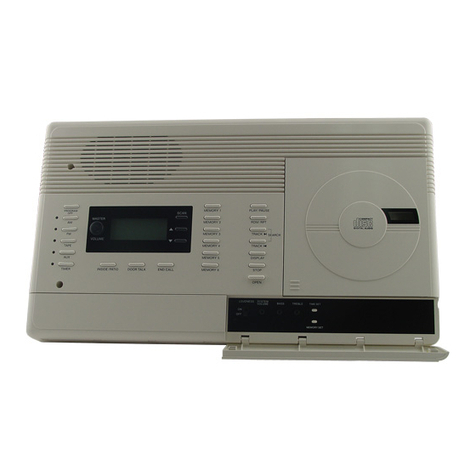
FINAL CHECK-OUT AND ADJUSTMENTS
After installing the units, again check that the SDB chassis, jacks,
and wiring harnesses are clear of all aircraft operating controls and
cause no interference with them. Check out the SDB unit functions
by following the instructions:
1. Plug in all the headsets mike and phone plugs into the respective
intercom jacks. Put on headset/s and position the boom mike close
to the mouth, as is the practice with a hand-held mike. Voice clarity
is best when mike is at one side of the mouth and 1/4” from the lips.
2. To assure that the aircraft radios, pilot’s headsets, and PTT switches
are functioning properly, turn both SDB units’ ON/OFF switches to
“OFF” position. Set both audio panels to “Headphone” position,
then turn on the aircraft radios as usual, and verify that the pilot
and co-pilot can hear the radios and can transmit using their
respective push-to-talk switches and headsets. Aircraft radios
and both audio panels should operate exactly as they did before
the SDB-800 system was installed. Aircraft radios reception should
also be heard in the passenger headsets (if applicable). Intercom
functions will not work when both units are turned OFF.
3. Turn both pilot and co-pilot SDB units to the ON position. Turn
the squelch controls of both units to full clock-wise position.
Set both unit’s volume controls to mid position. Verify that all
headset positions can now intercom to each other, including the
passengers, if used.
4. Verify that with both SDB units ON, both pilots can independently
operate the aircraft radios. (Check that the pilot can transmit and
receive properly on the radios selected on the pilot’s audio panel.
Do a similar check on the co-pilot’s side.
5. Radio / Tower Transmit Check: If there is over-modulation (garbled)
or weak transmissions over the aircraft radio, an appropriate
adjustment can be made. There is a small, square, adjustable
trimmer potentiometer inside each of the two SDB units. These
adjust the mike outputs to the aircraft radios. It is accessible
through a hole in the side of each case and is marked “Mod. Adj.”
It can be adjusted with a screwdriver. Clockwise rotation increases
the output level to the aircraft radio mike input. Counter-clockwise
rotation decreases modulation level.
This adjustment sometimes needs to be made after initial installation
of the intercom or if a new radio is installed at a later date. (The output
is set for unity gain at Sigtronics). If adjustment is necessary, it should
be done one at a time. For example, rst set the pilot’s Mod. Adj. After
the pilot’s side is set satisfactorily then adjust the co-pilot’s unit.
This concludes the system check-out. Refer to the following operating
instructions for proper use and other operating modes of the
Sigtronics SDB-800 intercom system.
OPERATING INSTRUCTIONS
The Sigtronics’ SDB-800 is a voice actuated intercom for dual audio
buss’ aircraft with “transmit through the aircraft radio capability”
using your push-to-talk switches. Each intercom has three controls.
Power Switch - Turns unit on and o and switches the pilot’s mike
direct to the radio in the “o” position.
Volume Control - Controls the intercom volume.
Squelch Control - Controls the threshold of amplier turn-on. This
adjusts for variations in background noise found in dierent aircraft.
Each system will function as an independent intercom with pilot and
co-pilot having their own ON/OFF switch. When both intercoms are
ON, pilot, co-pilot, and 6 passengers (if used) can intercom. Also, when
either pilot or co-pilot transmit over the radio, they will hear each
other. If both transmit simultaneously, neither will hear the other. The
purpose of this feature is to allow independent VHF communication.
Transmitting is also possible with the intercom OFF.
CAUTION - As is standard practice with all aircraft avionics equipment,
be sure that the aircraft radio master switch is OFF when you start up
the aircraft engine.
INTERCOM OPERATION
A. First set both SDB ON/OFF switches to the “ON” position.
B. Turn both SDB unit volume controls to the 9 o’clock position
and both squelch controls all the way up (clockwise). Notice the
intercom is now continually activated and you should be able to
talk between headsets.
C. To adjust the intercom squelch controls for voice activated
operation (VOX), it is helpful to have some background noise
present. It may also be necessary to turn up the intercom volume
controls. Turn both intercom squelch controls all the way counter
clockwise. Now, without speaking, rotate one of the squelch
controls clockwise until you hear the background noise in your
headset. Next, using the same control, rotate counter clockwise
small, incremental amounts until the background noise disappears.
(This procedure is necessary because the squelch is a “fast on, slow
o” system). The squelch control is now set on that intercom unit.
D. Adjust the other intercom squelch control similarly by turning
it clockwise until you hear background noise. Rotate counter
clockwise incremental amounts until the background noise
disappears. Small adjustments may be necessary if aircraft
background noise changes signicantly - such as from idle to
maximum power.
RADIO TRANSIT MODE
Because of the dual intercom design of the SDB-800, transmitting
from both pilot and co-pilot positions is possible simultaneously
and one-at-a-time. Each pilot selects the radio he wishes to use via
his audio panel. When he presses his PTT switch, his headset mike
is routed through the intercom to the radio he selected. Only his
mike will be live. The microphone of any passengers connected to
the pilot’s side of the SDB-800 system will be muted when the pilot
transmits. Similarly, when the co-pilot transmits, only the co-pilot’s
mike signal will go out on the radio selected by the co-pilot. When
transmitting, the pilots will hear their own voice via the aircraft radio
side-tone return. If the radio does not provide transmit side-tone, then
they will not hear their voice. (A minor modication to the SDB unit
will enable it to simulate side-tone).
RADIO MONITORING
Radio monitoring is automatic. The radio monitor circuit is always
active; even with SDB unit power switch OFF. Each pilot will only hear
the radio selected by his respective audio panel.
SOLO FLIGHTS
The intercoms may be turned o during solo ights. The pilot will
still hear the aircraft radio, since this circuit is always active, and may
transmit to ATC via his push-to-talk switch.
BACK-UP (Fail safe)
If a problem is suspected in the intercom, simply turn it o. You will still
receive the aircraft radio(s) as normal and will be able to transmit from
the pilot’s position. You may also use the hand mike, however, the SDB
unit should be turned o and you should unplug your boom mike
from the mike jack. (Leave headphone plugged in for radio reception)
7-30-2021 sdb-800.pdf




